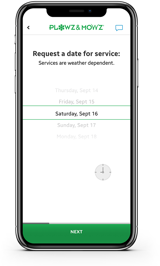WRITTEN BY admin
Proper pruning is crucial for maintaining a healthy and attractive garden. Whether you’re dealing with trees, shrubs, or flowering plants, knowing when and how to trim them can significantly impact their growth and bloom. This blog post will cover the basics of pruning different types of plants, including how much to take away, the best times for trimming, and the reasons and methods behind these gardening practices.
Why Prune?
Pruning serves several purposes:
- Health: Removing dead, damaged, or diseased branches helps prevent the spread of pests and diseases.
- Shape: Trimming helps maintain a plant’s form and size, keeping it well-proportioned and aesthetically pleasing.
- Growth: Cutting back certain plants encourages new growth, promotes more robust health, and can lead to more flowers or fruits.
When to Prune
The timing of pruning varies by plant type and desired outcome:
- Late Winter/Spring: Prune most deciduous trees and shrubs in late winter or early spring before new growth begins. This timing allows for vigorous spring growth.
- After Flowering: Spring-blooming shrubs like azaleas and rhododendrons should be pruned immediately after they finish blooming to avoid cutting off next year’s buds.
- Fall: Generally, avoid heavy pruning in fall as new growth might not have enough time to harden off before winter.
How Much to Prune
- Light Pruning: Removing less than one-third of a plant is considered light pruning and is safe for most plants at the appropriate times.
- Moderate Pruning: Up to one-third of the plant can be removed, typically suitable for overgrown shrubs or those needing shape correction.
- Severe Pruning: Reserved for very overgrown or neglected plants, removing more than one-third can stress the plant but may be necessary to rejuvenate it.
How to Prune
Trees
- Remove Dead Branches: Cut back to the trunk or main limb without leaving a stub.
- Thin the Canopy: Remove select branches to allow light and air to filter throughout the tree more effectively.
- Elevate Lower Branches: Remove lower branches to raise the canopy, especially useful for clearance over lawns or walkways.
Shrubs
- Thinning: Remove older stems at the base to encourage new growth from the roots.
- Heading Back: Cut back the tips of branches to a node to shape the shrub and encourage bushier growth.
Flowering Plants
- Deadheading: Regularly remove spent flowers to encourage more blooms.
- Cutting Back: Perennials often benefit from being cut back after blooming or in late fall to keep them tidy.
Tools for Pruning
- Secateurs: Ideal for small branches and ideal for precise cuts.
- Loppers: Better for thicker branches, providing more leverage.
- Pruning Saw: Necessary for thick tree branches where secateurs and loppers won’t suffice.
Tips for Effective Pruning
- Disinfect Your Tools: Between cuts, especially when dealing with diseased plants, to prevent spreading pathogens.
- Make Clean Cuts: Jagged cuts can harm plants and slow down healing.
- Follow Plant-specific Guidelines: Some plants have unique requirements; for instance, grapevines and fruit trees often follow specific pruning patterns for health and productivity.
Pruning doesn’t have to be daunting. Knowing when, why, and how to prune, you can maintain the health and appearance of your garden effectively. Each type of plant has specific needs, but the general principles of timely pruning, correct techniques, and understanding the plant’s growth pattern will guide you in keeping your garden thriving. By investing time in learning these techniques and applying them throughout the gardening season, you’ll not only improve the health of your plants but also enhance the overall beauty of your landscape. Remember, regular maintenance is the key to a vibrant and flourishing garden. Happy pruning!

























